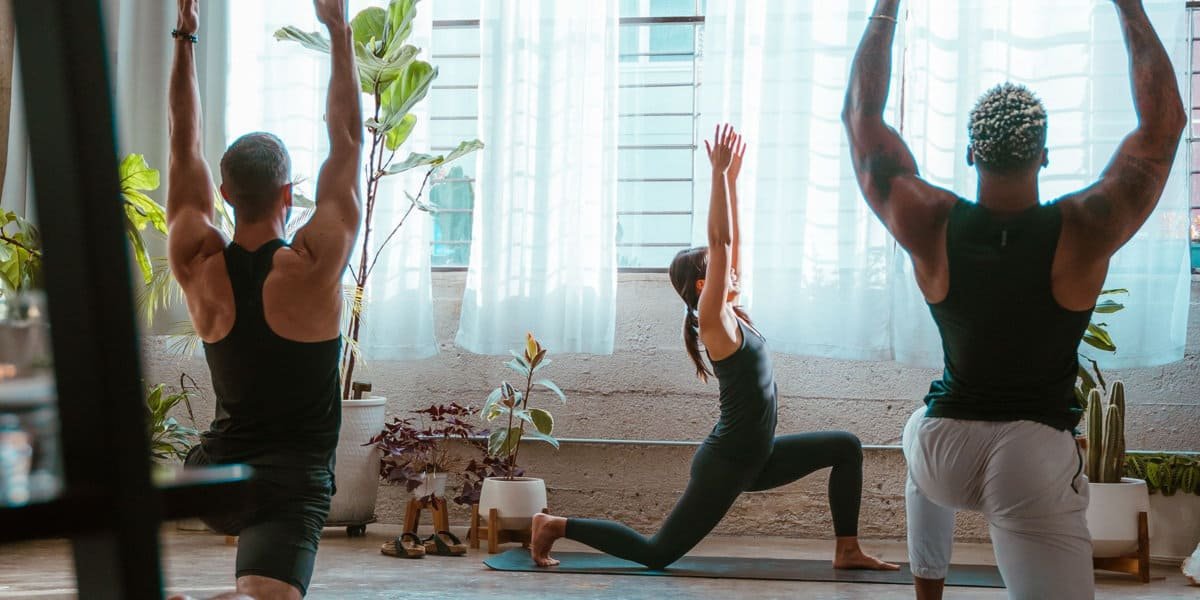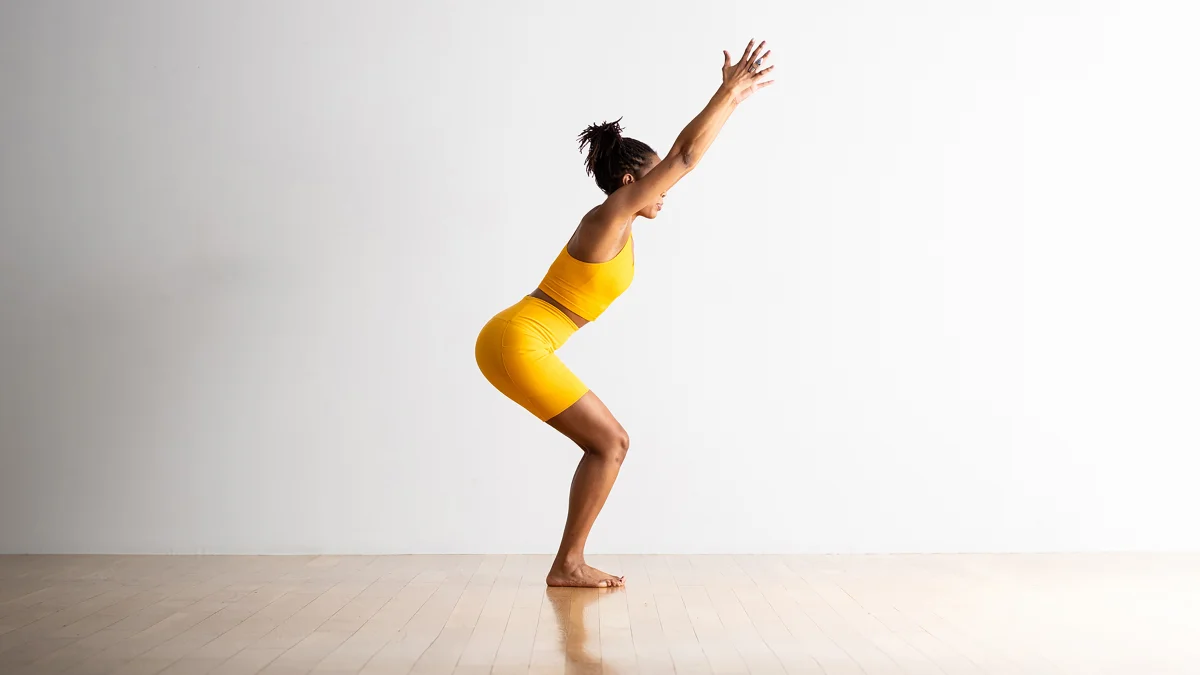If you find yourself feeling stressed, anxious, or unhappy for most of your day? Then chances are, you have a disturbed inner Chakra Balance, and you can use the healing power of yoga in your daily life to maintain your mental and physical health balance.
Stress affects our lives physically and emotionally, making it hard to focus daily. Yoga offers several ways of dealing with stress, including active meditation, deep stretching, along muscle-strengthening workouts. All this produces, Yoga is beneficial for the body and the mind.
This blog post is here to enlighten you with the healing power of yoga and how yoga can make a difference in your life if you practice it daily. So, if you’re interested in living a healthier, more productive life, then this is the article for you.
The Healing Power of Yoga
Yoga is an ancient practice passed down for thousands of years. The word “Yoga” itself means, ‘to bind’ and therefore, it helps the mind, body, and soul to feel at ease by encouraging you to release high vibration feelings altogether.
Yoga is a great way to improve your overall balance, strengthen muscles and prevent injuries. The calming effect of Yoga also helps with mental health issues like stress or anxiety.
Following are some attractive health benefits of Yoga for the body and mind. Let us take a look:
Benefits of Yoga for Body
If your emphasis is on building endurance, body control, balance, core strength, and flexibility, daily yoga practice will provide you with the following physical benefits.
- Improves respiration.
- Increases metabolism.
- Helps with weight loss.
- Increases flexibility in muscles.
- Increases mobility around joints.
- Help your tone and gain lean muscle mass.
- Relieves chronic joint and muscle pain syndrome.
- Reduces the risk of heart health problems like high blood pressure or cardiomyopathy.
Benefits of Yoga for Mind and Soul
Yoga is a great way to unwind, clear your thoughts, and feel more alive. Incorporating yogi stretching with meditation has another set of vital mental health benefits for your mind.
- Yoga breath work helps the brain’s nerve cell activation.
- Help you establish mindfulness which relieves chronic stress patterns.
- Reduces insomnia issues due to negative thoughts, anxiety, and stress.
- Help you sharpen concentration on work by calming negative thought processes.
What to Expect in Long-Run?
If Yoga is a consistent part of your fitness routine, then here are a few main physical benefits that you will experience from a long term-practice:
Endurance – overtime you make it through your whole workout with fewer number breaks, play harder in the last few minutes, and have more overall energy preserved as well.
Body control – you become more physically aware of every muscle in your body. You can facilitate a better connection between your body’s muscular and skeletal systems with your mind.
Balance – daily practice will help you develop balance by learning to engage your muscles actively and improve your ability to revert to perturbations or unstable situations mindfully.
Core strength – over time, you learn to properly engage your core and strengthen this primary source of stability in your body while improving your posture and taking pressure off your lower back to improve your spinal health.
Flexibility – practice will reduce the risk of injury, reduce the recovery time, and help you gain more range of motion to increase your overall strength and power.
Some other added perks are Increased blood flow and reduced symptoms of anxiety and depression.
4 Key Concepts You Need to Master to Feel Power of Yoga
Yoga is no magic pill to pop and find all health solutions at once. Nothing will work for you until you make your Yoga practice and your wellbeing the top-most priority.
Here is the list of four key concepts that one should master to experience the associated health benefits of Yoga.
- Be physically aware. The most important thing you should do while performing Yoga is listen to your body. Listen to what feels good, what feels uncomfortable, and what feels extremely painful. Tingling pain or pinching in the nerve should be avoided, while moderate discomfort is usually your body becoming accustomed to a deeper range of motion or stretching.
- Warm it up. Start with full-body dynamic stretching routines to warm up the muscles and joints. Prepare your body before getting into static poses that push flexibility boundaries. Skipping a warm-up session can induce chances of serious injury so that no exceptions will be taken.
- Take your time. Do not try to force flexibility. Over time, your mind and body will get used to these poses, and your level of flexibility and strength will enhance. Pushing yourself beyond your physical limits is similar to attempting to drink gallons of water at once. You don’t drink gallons of water at once because you know you will choke, so the same goes with Yoga as well.
- Breathing – Last but not least is the correct breathing technique. In Yoga, you want to focus on binding your breath with your moves. When you inhale, lengthen, or rise, breathing must be constant. Try and concentrate on breathing in and out of the nose as slowly as possible to help you control your breathing rate. So, always remember to hold your breath then control your body.
The Exercise Guide – 6 Easy Yoga Poses, You Must Try Now!
This exercise guide includes six easy-to-perform yoga exercises (poses), which are carefully aligned to ensure that you are given all necessary tools to reap the physical benefits of Yoga without being overwhelmed by a large number of exercises. This exercise guide will briefly and effectively explain the following points:
- List of target muscles or muscle groups of each activity.
- Provide specific examples of physical benefits.
- Explain proper execution of activities using concise language and high-quality visual aids.
- Include modifications and variations for people who cannot perform the exercise as described.
- MOUNTAIN POSE
Basic standing pose. This is a great yoga pose to start your workout to get your body accustomed to the proper posture required in every yoga practice.
Target Area: Full body.
Practical Benefits: Improve posture, release shoulder tension, properly engage the core, and increase body awareness.
The Technique:
- Stand with big toes touching and heels an inch apart.
- Slightly bend the knees to prevent locking out and engage the thigh muscles. Relax the glutes.
- Reach the tailbone down to the ground, tilting the pelvis slightly upward to take the arch out of the lower back and engage the abdominal muscles.
- Lift your chest, draw the ribs in towards one another, and relax the shoulders.
- Actively reach hands down toward the ground with palms facing forward.
- Hold the pose for 30 – 60 seconds.
Tip: Form a straight line from your pubic bone to shoulders to properly engage your core.
- CAT & COW STRETCH
This is a perfect dynamic stretching pose that you should try before every Yoga practice or even between your working hours to give that Spine good blood circulation.
Target Area: Spine.
Practical Benefits: Relieving back pain, improving spine mobility, preparing the Spine for physical activity.
The Technique:
- Start in a tabletop position, knees and hands on the ground with feet untucked, knees under hips, and hands under shoulders.
- Inhale and arch the back, pulling the chest forward while reaching the butt upward.
- Exhale and round the back, bringing the butt and head towards one another under the body, pressing into the hands to press the back upwards and separate the shoulder blades.
- Repeat 5 – 10 times.
Tips:
- Make this movement as slow and consistent as possible.
- Deepen your breath. Your length should match the time it takes you to move from cat (rounded back) to cow (arched back).
- Limit the arch if you have lower back pain.
3. BIRD DOG STRETCH
Target Areas: Spine and Core.
Practical Benefits: Warming the core and legs muscles while working on balance improves the ability of the core muscles to contract, increasing the ability of the legs to lift off the ground in vertical jumps.
The Technique:
- Get in a tabletop position with your toes untucked, hips under knees, and hands under shoulders.
- Inhale, extend the (left) arm forward and (right) leg back so that there is a straight line from back heel to extended fingertips.
- Exhale as you squeeze the elbow of the outstretched arm to the knee of the extended leg under the chest, rounding the back.
- Repeat 3-6 times.
Tips:
- Breath out as much as possible.
- Move at a plodding, steady, and controlled pace.
- Keep your belly button tucked inside to arch out of your lower back.
4. CHAIR POSE
Target Areas: Hamstrings, Quads, and Core.
Practical Benefits: Build your lower body endurance and core stability by improving the depth and weight involved in your squats.
The Technique:
- Start with feet hip-width apart, and middle toes lined up with the heels.
- Sit with your hips down low in a squat position, ensuring that the core is engaged and the back is flat.
- Shift the weight in the heels, knees to the back.
- Extend your arms straight out, parallel to the ground, with shoulders relaxed.
- Hold for 30 seconds to 3 minutes.
Tip: Maintain a straight line with your torso to not puff your chest out. You must keep your ribs drawn in towards one another so your core stays super-engaged and your chest does not distance your lower body.
- FORWARD FOLD POSE
Target Areas: Lower back and Spine.
Practical Benefits: Reduces the tightness in your lower back and also improves flexibility around your lower back muscles. It’s especially effective for people who perform the following: walking, running or exercises that focus on the lower back, like dead-lift.
The Technique:
- Feet together or hip-width distant.
- Bend your knees as much you can to rest your chest on your thighs.
- Head and neck relaxed, gaze focused backward or up at the belly button.
- Hold this pose for 5 sec – 1 min.
Tips: Standing in the forward fold is focused on the lengthening of your Spine.
- HALF LIFT
Target Areas: Hamstrings, Spine, and Core.
Practical Benefits: Warm up the hamstrings, reduce the risk of injury from sudden movements, and reset the Spine.
The Technique:
- Feet together, back flat, and (option 1) hands are pressing into shins or (option 2, for more flexible individuals) fingertips on the ground.
- Pull chest forward while pressing abdomen toward the ground.
- Keep your neck in line with the back; parallel to the ground.
- Hold for 5 – 15 seconds. It is usually employed as a transition.
Tip: Generously bend your knees to flatten your back. Use a mirror in front of you to figure out what it feels and looks like to have a flat back.
How Can Yoga Make a Difference in Your Life?
When we talk about self-development, remember self cannot be developed because you have already been developed and blessed by nature. So, everything you do should be towards enhancing your true nature.
And Yoga is the tool of self-discovery. It helps you enhance your nature and characteristics, mental or physical, and enables you to raise your vibration and balance your seven chakras for a better life expectancy.
A daily yoga practice will open your brain towards positive thinking, free you from negative thought patterns and increase your bodily strength. This journey of self-discovery through Yoga is the ultimate truth of life. The faster you get there, the better you experience high vibrational energy ahead.
Final Note
There are numerous yoga practices, but they all share the same intention – helping people find their true selves through introspection and self-awareness.
Even if you don’t have enough time or space to practice asana or other forms of Yoga regularly, there are plenty of ways to incorporate some form of Yoga into your day. For example, try meditating at lunchtime each day instead of scrolling through social media feeds!
Remember that any act of selfless service is considered Yoga. There are plenty of opportunities every day (even while sitting at work!) where we can channel our energy into something positive.
Yoga isn’t just about physical movement; there are meditative practices as well—so don’t worry if you’re not an athlete!
Give yourself time each day to do what makes YOU feel good inside AND outside.
If you need help deciding what type of modality may work best for you (or how to get started), reach out to us!
Originally posted 2022-09-13 13:09:21.





